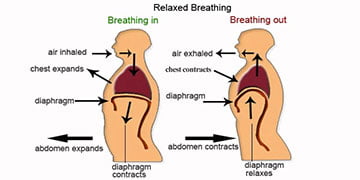How to stop smoking tips 1
How to Stop Smoking Tips 1
There are many articles offering ‘how to stop smoking tips’. In this article, these ‘how to stop smoking tips’ are based on my experiences using hypnotherapy as a successful smoking cessation method. Hypnotherapy uses techniques that help the patient’s mind to be more receptive to positive suggestions and visualisation. When this is combined with an awareness of central issues that drive the smoking habit, the hypnotherapy patient is ready to stop smoking. They can then go through a re-learning process of how to stay “stopped”.These three ‘how to stop smoking tips’ are part of that early journey. Your mind and body moves from being a “smoker” to “ex-smoker”. Once you have stopped smoking, you can then ultimately embrace the belief system and lifestyle of the “non-smoker”. In this lifestyle change, you lead your life naturally without the want or need for a cigarette. This is how to stop smoking.
If you are seeking professional help to stop smoking: Stop Smoking CardiffHow to Stop Smoking Tips #1:
Recognise that the nicotine cycle is just cravings fooling your mind
In my view, the first of the ‘how to stop smoking tips’ is the most fundamental tip of them all. If you smoke on a regular basis, then you are likely to be addicted to nicotine. Being a very addictive drug, it serves a simple purpose – once addicted, it wants to keep you addicted.
When your blood-nicotine level falls, your brain registers this depletion. You begin to feel “incomplete”. Symptoms include irritability, edginess, poor concentration and physical tension. In many ways it is similar to mild anxiety. These feelings sweep through you in waves until you are able to smoke a cigarette. When you smoke your next cigarette, you are increasing your blood-nicotine levels. Your brain registers this increase and the irritability symptoms begin to subside as you feel “complete” or “relaxed” again. The blood-nicotine levels are normalised and for how long this equilibrium lasts depends on the severity of your addiction. It can be a few minutes to a few hours.
Consider the nicotine cycle as purely an addictive drug cycle that wants to keep you on the inside. All other reasons for justifying smoking are superfluous to that cycle. If you are using those excuses of “but I like it” or “it helps me to feel better...” recognise that it is just the nicotine cravings that are deceiving you. Those who say that they “like” smoking have gone way past the initial nausea stage. You have dragged yourself through this stage, using another ‘value’ to keep you firmly on the smoking path e.g. “I want to look grown up”. As the nicotine cravings and smoking habits changed you, you will have suddenly realised that you are struggling without them.In my stop smoking hypnotherapy consultations, when my patient can recognise that they are stuck in the nicotine trap, they can then throw out all of the other excuses that justify the need to keep smoking. Hypnotherapy is a useful way of communicating this to the patient’s unconscious mind. It facilitates an important dissociation stage.How to Stop Smoking Tips #2:
Appreciate how anxiety and stress are connected with smoking

How to Stop Smoking Tips #3:
Identify how relaxed breathing is part of your smoking habit
In my view, the reason that cigarette manufacturers have kept trapping people for so long is because smoking involves the process of deep breathing. Any habit or ritual that incorporates deep breathing techniques will succeed because it involves the very natural relaxation mechanism that you all have. It is a technique that is so under-used. You will probably have heard the advice to “take a deep breath” to release stress. Non-smokers who cope with their stress effectively will use this breathing technique. It is used in yoga, meditation and hypnotherapy.Most smokers take up their habit as a teenager. Teenage life has many anxiety issues and finding a reliable way to cope independently with this period of life is very important; you are effectively setting up a template of coping for your adulthood. The best time to learn relaxation skills would be around (or just before) teenage hood. If cigarettes are introduced during this period and before any independent skills have been learned, the smoking-breathing habit becomes the crutch. So if these skills are learned too late, you may already have become hooked on cigarettes and believe that they help you to “relax” when tense.Over the years as a smoker, you forget about this natural ability. When stressed, and in a place where you can’t smoke, you are left gasping for air. It’s as if only smoking the cigarette gives you the permission to breathe deeply and relax. It has become your stress management prop. Nicotine and smoking has deceived you over the years.So when ‘stressed’ and you smoke more cigarettes, it’s your ‘breathing’ technique that is relaxing you, helping you to feel better. It is the breathing that is reducing your anxiety and stress, not the cigarette (point made in ‘how to stop smoking tips’ #2). For the ‘ex-smoker’ to convert to the belief system of the ‘non-smoker’, these relaxation skills must be embraced. Without these relaxation skills, the ex-smoker goes through life as if something is missing. They fear a stressful event and their ability to cope independently. It’s more than just will-power that makes this conversion; the smoker must be aware of how your habit has changed your life.In my hypnotherapy consultations, learning breathing and relaxation techniques are part of the hypnotherapy treatment. They help you with the immediate cravings and cope with stress and anxiety once you have stopped smoking.How to stop smoking tips: summary
















